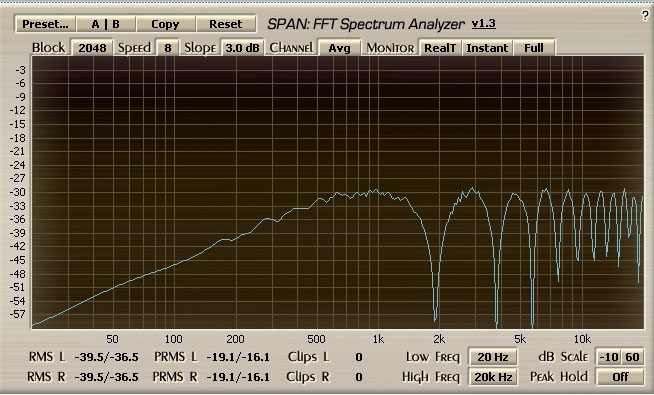Imagine that you’re miking a singing guitarist. There’s a mic on the singer and another on the guitar. When you mix those two signals together, there’s a strange, colored tone quality in the vocal. What’s going on? How can you fix it?
The guitar mic is about a foot farther from the singer than the one for his voice. Sound takes about 1 millisecond (msec) to travel a foot, so the guitar mic picks up the singer’s vocal leakage with a 1 msec delay. When both mics are mixed to mono, the vocal has a hollow tone quality.
This is comb filtering. It’s a frequency response full of peaks and dips, and is created by adding together two identical signals separated by a very short delay (less than 20 msec). The result is called a “comb filter” because the frequency response looks like the teeth of an inverted comb (Figure 1). The sound has a colored, filtered tone quality, something like a jet plane passing overhead.
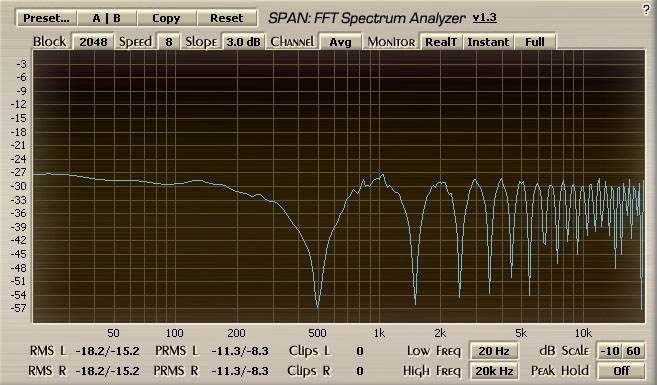
More specifically, it’s caused by phase cancellations at various frequencies. That’s what happens when there’s a short time difference between two identical signals that are summed together.
To prevent comb filtering, follow the 3-to-1 (3:1) rule. The distance between mics should be at least three times the mic-to-source distance (Figure 2). For example, if the vocal and guitar mics are 12 inches apart, put the mics 4 inches away (or less) from the singer and guitar.
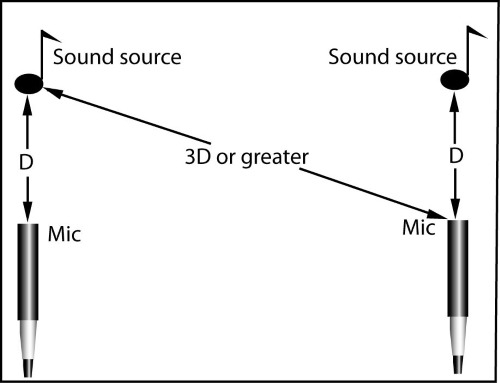
How does the 3:1 rule work? It results in a level difference between mics of at least 10 dB. Then comb filtering diminishes so that it’s practically inaudible (Figure 3).
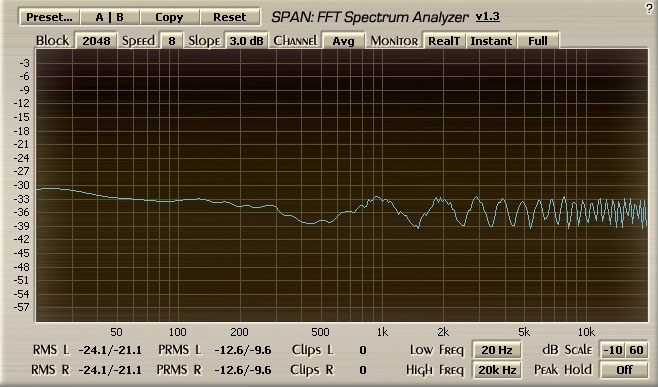
It also helps to angle directional mics apart to increase the separation between their signals. Aim the vocal mic partly up and aim the guitar mic partly down. Better yet, mount two bidirectional mics in a coincident arrangement so there’s no delay between their signals.
Aim the “dead” null of the vocal mic at the guitar, and aim the null of the guitar mic at the vocal (Figure 4).
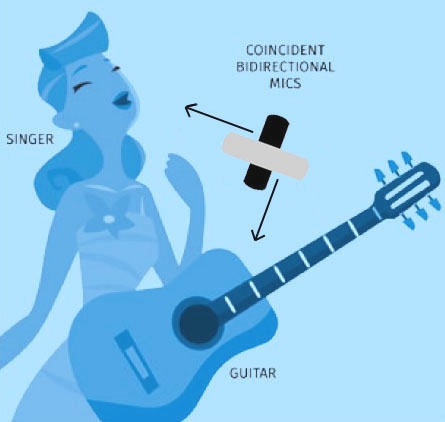
More solutions:
— Delay the vocal mic signal about 1 msec so that it aligns with the vocal leakage in the guitar mic.
— Use a clip-on mic or pickup on the guitar.
— Employ a single mic to pick up both sources.
— In a recording studio, record the guitar first, then overdub the vocal.
Let’s look at other situations that can create comb filtering. For example, a microphone is mounted in a desk stand on a stage floor to pick up actors. The direct sound from an actor combines at the mic diaphragm with the delayed sound reflected off the floor, causing comb filtering.
A solution is to use a boundary (surface-mounted) mic. The direct and delayed sounds arrive at the mic diaphragm at the same time, in phase, so there’s no comb filtering.
Another example: two loudspeakers are mounted on either side of a stage. An audience member is located at unequal distances from the two speakers playing the same program. One loudspeaker has a longer path length to the listener than the other, resulting in a delay.
A possible solution is utilizing a single loudspeaker over the stage. Note that room reverb can reduce the audibility of comb filtering.
How It Works
Suppose you hear a sound mixed with a delayed replica of that sound. Normally that’s an echo – a repetition. But if the delay is a few msec or less, we can’t resolve the direct and delayed signals into two separate and distinct sounds, as we can with an echo, and instead we hear a single sound with an unusual frequency response.
What does a comb-filter frequency response look like? To find out, I measured the frequency response of two identical signals mixed at equal levels, with one signal delayed slightly.
To create the comb filter displays, I imported a wave file of pink noise into two tracks of a multitrack recording program. I also imported a wave file of a 1 kHz sine wave to use as a delay reference. For example, the end of one cycle in the 1 kHz wave is a 1 msec delay compared to time zero. By aligning track 2 with the end of one cycle, that track was delayed 1 msec (Figure 5).
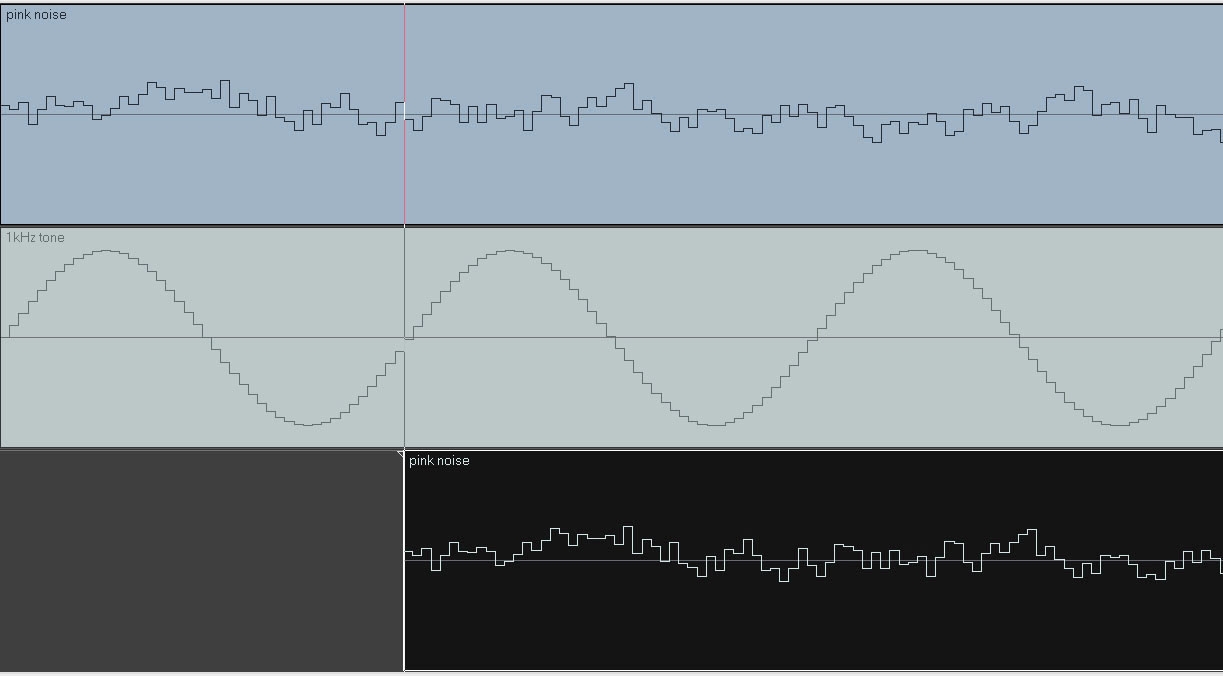
Track 2 of pink noise (Figure 5, bottom) is delayed one cycle of a 1 kHz sine wave (1 msec). The 1 kHz sine wave track is used only to set the delay (the time offset of the second pink-noise track), and is not part of the audio.


